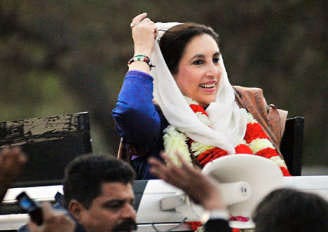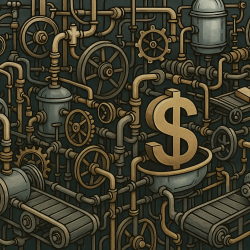Murder has unfortunately long been a tool of statecraft. The Bible records a general named Jehu assassinating the kings of Israel and Judah in one fell swoop, shooting both with arrows. Julius Caesar was famously stabbed to death in the Curia of Pompey by senators afraid he was amassing too much power. William the Silent, the founder of the monarchy of the Netherlands, was the first political leader to be assassinated by firearm when Balthasar Gérard shot him with a wheel-lock pistol.
Early American politicians were not surrounded by layers of security like they are today. Andrew Jackson’s inaugural party was open to the public, which scandalized many at the time. Jackson himself faced death when a would-be assassin attempted to shoot him on the Capitol steps. Both his pistols misfired and Jackson beat the man with his can until Congressman Davy Crockett pulled him away.

The late 19th century was a dangerous time for politicians. Over a span of 36 years, three American presidents were assassinated via firearms. Abraham Lincoln was shot in Ford’s Theatre by a southern partisan, James Garfield was shot at a train station by a deranged office-seeker, and William McKinley was shot at the Pan-American Exhibition by an anarchist. It was only after McKinley’s assassination that the US Secret Service, originally created to go after currency counterfeiters, became the presidential bodyguards.
Just a few years later, political assassination came to the Gem State when former governor Frank Steunenberg was killed by a bomb rigged outside his house. A miner named Harry Orchard was charged with setting the bomb in a case that attracted national attention. Newly-elected Sen. William Borah served as prosecuting attorney while Clarence Darrow, years before the Scopes Trial made him famous, served as defense. Orchard and two alleged accomplices were acquitted, meaning nobody was ultimately held responsible for the murder.

The 1960s saw political assassinations make a comeback. President John Kennedy was shot while riding through the streets of Dallas, Texas, and the supposed real story of that assassination continues to fascinate people to this day. Did Lee Harvey Oswald fire the shots that killed Kennedy from the Texas School Book Depository? Why did nightclub owner Jack Ruby murder Oswald before his trial? Who was on the grassy knoll? Conspiracy theorists have suggested motives for political figures and organizations like Kennedy’s vice president Lyndon Johnson, future CIA director and president George H.W. Bush, Fidel Castro, the Soviet Union, Israeli Mossad, and the CIA itself. I assume we will never know the full story.
Black nationalist Malcom X was murdered in 1965 by his former compatriots in the Nation of Islam while Martin Luther King Jr. was shot in 1968 by James Earl Ray. (Why do we often use three names for high profile assassins?) Sen. Robert Kennedy was shot by Sirhan Sirhan in the kitchen of the Ambassador Hotel in Los Angeles moments after winning the California presidential primary.
In 1978, Congressman Leo Ryan of California grew concerned about alleged abuses within Jim Jones’ Peoples Temple movement. He took it upon himself to lead a delegation to Guyana, where the cult had established a commune called Jonestown. There he met several cult members who desperately wanted to escape, but as they were preparing to depart Jones’ Red Brigade ambushed the delegation, killing Ryan and several others.
Better security measures in the United States have made political assassinations rare once more, though not for lack of trying on the part of would-be assassins. In 1912, former president Theodore Roosevelt was running again on the Progressive Party ticket when a man shot him in the chest just before a speech. Roosevelt, realizing the bullet had not punctured his lung, gave his planned speech before going to the hospital.

A former follower of Charles Manson named Lynette Fromme pointed a Colt M1911 at President Gerald Ford and pulled the trigger, but had neglected (whether deliberately or mistakenly) to chamber a round. Just two weeks later, another woman, Sara Jane Moore, fired two shots from a .38 Special revolver toward Ford in San Francisco but missed.
In 1981, newly elected President Ronald Reagan was shot by John Hinckley Jr. when coming out of the Washington Hilton after giving a speech to labor leaders. News coverage at the time did not realize Reagan had been shot for nearly an hour, as Secret Service immediately took him away in the presidential limousine. Reagan nearly died but for the heroic efforts of surgeons at George Washington University Hospital.
Political assassination remains common in other parts of the world. Anwar Sadat of Egypt was killed during a parade in 1981, while Yitzhak Rabin of Israel was shot in 1995. In both cases, the assassins were angry about peace overtures their leaders engaged in.
Benazir Bhutto was the first woman elected to lead a majority-Muslim nation when she became prime minister of Pakistan in 1988. She was driven from office amid corruption charges, but returned in 2007 with a popular mandate to take over after the military dictatorship of General Pervez Musharraf. Riding in a bulletproof vehicle during a rally in Rawalpindi, she opened the roof to wave at the crowd as was immediately shot. The assassin also detonated a suicide vest loaded with ball bearings and Bhutto was instantly killed.

One of the most famous political assassinations in history was the shooting of Austrian archduke Franz Ferdinand in 1914 by a Serbian nationalist named Gavrilo Princip. As you know, this set off a chain reaction that led to World War I, and by extension the entire 20th century.
The shooting of Donald Trump on Saturday, and the reaction of many leftist figures who wish it would have succeeded, show that using violence to accomplish political goals is never going completely away. The alleged failures of the Secret Service and local law enforcement in securing the venue in Butler, Pennsylvania show that there is no magic bullet, so to speak, when it comes to protecting important people against rabid murderers. Pray for peace, pray for protection, and be ready for anything.
Gem State Chronicle is a reader-supported publication. To receive new posts and support my work, consider becoming a free or paid subscriber.
About Brian Almon
Brian Almon is the Editor of the Gem State Chronicle. He also serves as Chairman of the District 14 Republican Party and is a trustee of the Eagle Public Library Board. He lives with his wife and five children in Eagle.












